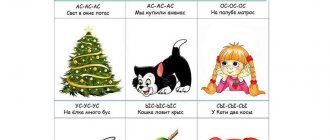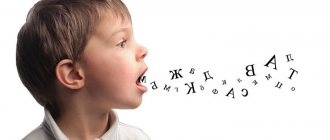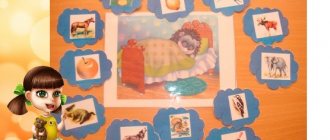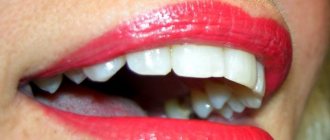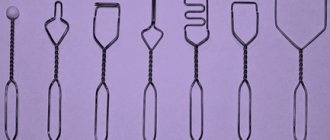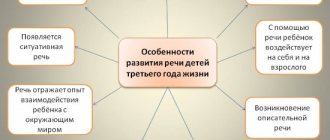“It would be better if you wrote the sounds of English with Russian pronunciation”,
- some students ask us, meaning transcriptions in the style of “
wonderful, beautyful, darling”
.
No, friends, we (Lingualeo people) urge you not to equate Russian and English sounds. They are not identical! Writing “Russian transcriptions” is generally TABOO! It’s better to understand the scary signs of English transcription. Learn to pronounce each of these sounds. At the same time, find and work out every difference between the English sound and our “analogue”.
An article about how not to make a wild vest out of the Wild West
Today we will analyze as many as 6 consonants of the English language. Click on the link to go to the sound you are interested in:
- /b/
- /p/
- /m/
- /w/
- /v/
- /f/
The choice was not made by chance: all 6 sounds are formed with the participation of the lips.
We will practice sounds according to the scheme that we used in previous articles:
- Theory: we will look in detail at what pronunciation mistakes many students make,
- Practice: let's practice using a special set of words, videos and tongue twisters,
- Examples: Let's find illustrative examples of the use of sound in a famous song.
English paired consonants /b–p/
Now let's talk about the promised lack of stunning/voicing of sound. In Russian there are processes:
- when a voiceless sound is in front of a voiced sound, it also becomes voiced: To p desyatka /to bd'is'atk /,
- when a voiced sound comes at the end of a word, it becomes voiceless: oak /dup/.
In English, the voiceless /p/ is not voiced when placed before a voiced sound: stop B
ob /stɒ
p b
ɒb/.
And the voiced /b/ is not devoiced in final position. It becomes weaker and shorter, but remains VOID! Otherwise, you can change the meaning of the word: cab (taxi) – cap (lid)
.
Listen to Chris Rock say club
.
We stay in the club b . We live in the club b . We die in the club b . We get our car washed in the clu b . We go to school in the club b . We go to the cleaners in the clu b .
From the very beginning of the video
EXERCISE.
Here are words ending in /b/ and /p/. Say them according to the transcription, without deafening the /b/ sound at the end. Remember that the sound /b/ becomes weaker and /p/ is pronounced with partial aspiration.
cu b
/kʌ
b / cu p
/kʌ
p /
li b
/lɪ
b / li p
/lɪ
p /
pu b
/pʌ
b / pu p
/pʌ
p /
ro be
/rəʊ
b / ro pe
/rəʊ
p /
ta b
/tæ
b / ta p
/tæ
p /
ca b
/kæ
b / ca p
/kæ
p /
ri b
/rɪ
b / ri p
/rɪ
p /
bu b
/bʌ
b / bum p
/bʌm
p /
clu b
/klʌ
b / clum p
/klʌm
p /
When you have mastered all the details of correct pronunciation, consolidate the result with tongue twisters.
For the sound /b/
- A B ritish b uilder b uilt a b uilding of b rown b ricks. A B ulgarian b uilder b uilt a b uilding of b lack b ricks.
- A b ig b lack b ug b it a b ig b lack b ear, a b ig b lack b ear b it a b ig b lack b ug.
- B etty's b a b y's name is B ar b y. B etty's B ar b y is a b ad- b ad b oy. B aby B ar b y is a b ad b ad b aby. B etty b ought a b right b lue b lanket for her b a b y- b oy.
For the sound /p/
- P retty P olly P erkins has a p air of p retty p laits.
- P eter P i p er p icked a p eck of p ickled p e p p er, a p eck of p ickled p e p p er P eter Pi p er p icked. If P eter P i p er p icked a p eck of p ickled p e pp er, where's the p eck of p ickled p e pp er P eter P i p er p icked?
- P ablo P icasso p ut off his p alette, p aintbox and p aintbrushes. And painted with p en a pic ture of a p eaceful p lace in P aris. With a p ink p alace and a p aled p ark p lenty of p retty p lants. What's the p ossible p icture 's rice?
Lesson summary on the topic: “Staging the sound F”
Summary of individual speech therapy sessions. Speech therapy conclusion: OHP III with a dysarthric component.
Topic: Sound production [f].
Goal: Teaching the correct pronunciation of the sound [f].
Tasks:
Educational:
- formation of correct articulation of sound [f], knowledge about the acoustic features of sound;
- learning to perform movements by imitation, verbal instructions.
Corrective:
- development of the articulatory apparatus, speech breathing and directed air flow;
- development of general and fine motor skills;
- development of phonemic hearing and perception, concentration;
- development of orientation on a sheet of paper in a square and spatial orientation.
Educational:
- nurturing positive interest in activities and works of art.
Equipment: mirror, sound articulation profile [f], hedgehog toy, pictures - articulation gymnastics, checkered sheet, pencil, picture - coloring book with a picture of a hedgehog.
Lesson plan:
I. Organizational moment. Setting up for the lesson.
II. Main part.
- Articulation gymnastics.
- Self-massage of the face.
- Physical education minute.
- Exercises for the development of speech breathing, directed air flow.
- Clarification of the articulation of sound [f].
- Making the sound [f] by imitation.
- Exercise to develop phonemic awareness.
- Graphic dictation.
III. Summary of the lesson.
Progress of the lesson:
I. Organizational moment. Setting up for the lesson.
Speech therapist. Do you like to visit? Child. Yes. Speech therapist. Then let's go! But who invited you today? Guess a riddle.
(The speech therapist asks a riddle.)
This is who rustles in the grass And snorts so funny - f-f-f... All covered in needles, you can’t take it, Who is this, (child’s name)? Child. Hedgehog!
Speech therapist. A cheerful hedgehog is waiting for you today. It's never boring with him because this funny little animal knows a lot of games.
II. Main part.
1. Articulation gymnastics.
1.1. Lip exercises.
Speech therapist. Do lip exercises with your hedgehog.
(The speech therapist reads a poem.)
"Smile". Our hedgehog is familiar to all children, He greeted you with a smile.
(The child smiles widely, stretching his lips, holds for up to 7 seconds.)
“Let’s hide our teeth.” He raised his upper lip and showed his upper teeth. And now, on the contrary, I close my mouth tightly.
(The child repeats several times, increasing the time of showing the upper teeth to 7 seconds.)
“Let’s comb our lower lip.” Look, the comb has teeth. Hedgehog is combing his lips. (The child runs his upper teeth along his lower lip 6–8 times, massaging it.)
1.2. Exercises for the tongue.
Speech therapist. Look and listen to how a cheerful hedgehog greets the morning. Do tongue exercises with him slowly, correctly.
(The speech therapist reads a poem.) The hedgehog got up early in the morning and ran to brush his teeth. Right - left, right - left He brushes his teeth skillfully.
(The child stretches, opens his mouth in a smile, and uses the tip of his tongue to “clean” 5–6 times behind the lower teeth.)
Our hedgehog took a comb and began to comb his hair. We don’t lag behind him, We’ll show everything with our tongue.
(The child, smiling, bites his tongue with his teeth and “drags” it back and forth.)
Next in order, let's do exercises! The hedgehog arches his back, The hedgehog arches his back.
(The child opens his mouth wide, raises the back of his tongue, resting the tip on the lower teeth. Then lifts the tongue by the upper teeth. Perform 6 - 8 times.)
Now it’s time for breakfast: The hedgehog baked pancakes for you, with sour cream.
(The child opens his mouth in a smile, puts his wide tongue on his lower lip. Holds for a count of up to 8.)
How does a hedgehog like sour cream? Lick your mouth quickly!
(The child opens his mouth wide. He licks his upper lip with his wide tongue, then the lower.)
Now let's have some tea. We will pour tea into a cup. The hedgehog is full, the hedgehog is happy, the hedgehog loves all the guys!
(The child opens his mouth, sticks out his tongue, bending the side edges and the tip of the tongue upward. Clapping his hands rhythmically.)
2. Self-massage of the face.
Speech therapist. Now teach your friend how to perform a facial massage, which helps you be smart, attentive and pronounce all sounds clearly.
(The speech therapist reads a poem.)
I'll pull my ears forward and then back. My prickly hedgehog will be very happy. One, two, three - I'll say four, five, and six, and seven. Don't forget: everyone should do an ear massage!
Child. Taking hold of the middle of the auricle, pulls it forward and then back, counting slowly to 10. (1 time.)
And now I’ll quickly rub my cheeks in a circle: I’ll develop the memory of the prickly hedgehog. One, two, three - I'll say four, five and six and seven. Don't forget: a cheek massage should be done by everyone!
Child. Using the index and middle fingers at the same time, intensively “draws” circles on the cheeks. (Does 1 min.)
I draw a circle on my chin: I want to help the hedgehog. Speak clearly, quickly, pronounce all sounds. One, two, three - I'll say four, five, and six, and seven. Don’t forget: everyone should do this type of massage! To make the mischievous hedgehog think better, I will stroke his forehead, my dear friend. One, two, three - I'll say four, five, and six, and seven. Don’t forget: everyone should do this type of massage!
Child. With the same two fingers, “draws” circles on the chin, circles on the forehead - 1 minute. (Does it 1 time at a time.)
So that the hedgehog can see better, become more attentive, faster, I will draw magic glasses as soon as possible. One, two, three - I'll say four, five, and six, and seven. Don’t forget: everyone should do this type of massage!
Child. Massages the upper and lower eyelids with two fingers without closing the eyes. (Does 1 min.)
Nose massage.
Child. Using the pads of the index fingers of both hands, presses on the designated points. Each point must be pressed and held, without releasing, for a count of up to 10. (Does it 1 time.)
Point 1 is just below the wings of the nose. Right and left. (The speech therapist reads a poem.) I’ll hit the dots with my fingertips: I’ll knead the prickly hedgehog’s nose. One, two, three - I’ll say four Point 2 just above the wings of the nose, also on the right and left. Five, and six, and seven. Don't forget: a nose massage should be done by everyone!
Child. Leaning back on the back of the chair, takes a long breath and exhale, arms hanging freely along the body.
Oh, our hedgehog was tired, he did it diligently. Knows: the benefits of massage will definitely happen!
3. Physical education minute.
Speech therapist. Now go out to the clearing, where the hedgehog loves to frolic with his friends. (The speech therapist reads a poem.) Along the dry forest path Top - top - top - feet are stomping. A gray hedgehog covered in needles walks and wanders along the paths.
The child stands slightly bent over. Arms bent at the elbows - in front of the chest, hands down. Legs bent at the knees, taking frequent steps.
If a wolf sneaks up, the hedgehog will turn into a ball. Oh oh oh! The child squats, clasping his knees with his hands. The hedgehog will bristle with needles - the wolf will not get it. The hedgehog won't touch anyone, but don't touch him either!
The child stands up, fingers open in front of the chest, and continues to take frequent steps.
4. Exercises for the development of speech breathing, directed air flow.
Speech therapist. It's nice to enjoy the beauty of the forest and fresh air. Exercise "Let's take a breath of fresh air." The child inhales through his nose and exhales smoothly through loosely closed lips - 3 times. Speech therapist. It seems like a strong wind has blown. Exercise "Breeze".
The child inhales through his mouth, feeling his stomach inflate; exhale forcefully, lightly biting your lower lip with your upper teeth.
5. Clarification of the articulation of sound [F].
Speech therapist. The hedgehog really enjoyed playing with you. He snorted f - f - f with joy. What do lips, teeth and tongue do when we pronounce the sound [F]? (The speech therapist shows the sound profile [F].) The child talks. When pronouncing the sound [F]: - the lower lip is slightly pressed against the upper teeth, a narrow gap remains in the middle for the passage of air, the upper lip is slightly raised; - the upper teeth are visible, the lower ones are covered by the lower lip; - the tongue takes the position of the next vowel sound; - the vocal cords do not work, the voice does not sound. (If the child finds it difficult, the speech therapist clarifies the correct articulation of the sound [F].)
6. Setting the sound [F] by imitation.
Speech therapist. Now try to pronounce the sound [F]. How does a hedgehog snort? The child pronounces the sound [F].
7. Exercise to develop phonemic awareness.
Speech therapist. The funny hedgehog has prepared another game for you. “Clap your hands when you hear the [F] sound.” (The speech therapist pronounces sounds, syllables, words, and the child claps his hands.)
Isolated: F, M, N, F, P, F, D, F T, B. In syllables: FA, AP, FU, BY, OF, UT, FY, DA, AF. In the words: LANTERN, HOUSE, PHONE, CAT, JACKET, SCARF, JAR, CABINET, BOW.
8. Graphic dictation.
Speech therapist. Did you enjoy visiting the hedgehog? But it's time to go back. Draw a path along which you will go home.
(The child, according to verbal instructions, draws a path: from the point, a cell to the right, a cell up, 3 cells to the right, a cell down, a cell to the right, 3 cells up, a cell to the right, 2 cells down, a cell to the right, 2 cells up, a cell to the right, 3 cells down , 2 cells to the right, cell up, cell to the right, cell up, cell to the right, cell down, cell to the right, cell down, cell to the right - there is the house).
III. Lesson summary
Speech therapist. What sound did you learn to pronounce today? Child. Sound [F]. Speech therapist. Well done! You tried really hard, so you succeeded. The cheerful hedgehog gives you a photo of himself, which you can color at home. And don’t forget to practice pronouncing the [F] sound correctly.
Author of the material: teacher-speech therapist MBOU gymnasium No. 16: Mikhailenko Natalya Konstantinovna
Also on topic:
Making whistling sounds
Features of pronunciation [v] - [f]
The sounds [v] - [f] do not require the lips and tongue to be very mobile during pronunciation. Articulation consists only of a slight stretching and everting of the lower lip, which is slightly pressed against the upper teeth.
The upper lip should be raised, with both lips exposing the upper teeth without tension. Exhaled air passes freely into the space between the upper teeth and lower lip.
When the sound [f] is pronounced, the vocal cords are in a relaxed state, and the voice is not used.
Pronunciation [in] requires adding a voice. This is the only difference between the sound pronunciation [v] - [f]. The performance should begin with a deaf pair, and only then move on to a voiced one, where the voice is already used and a slight tension of the lips is necessary.
